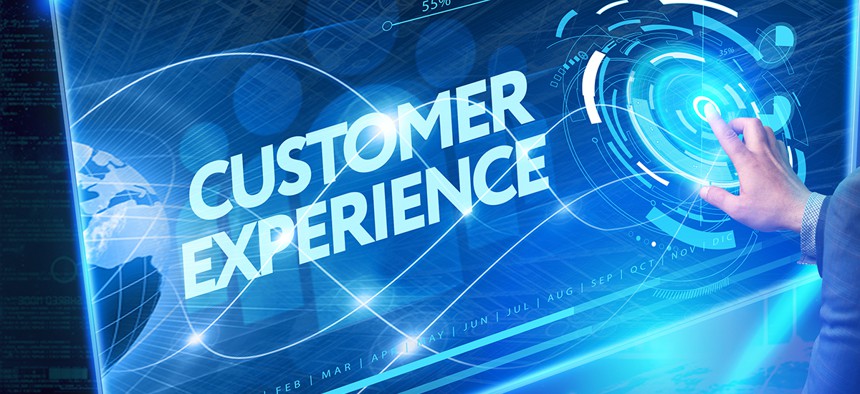This is the Best Way to Map a Great Citizen Experience

Den Rise/Shutterstock.com
It's necessary to have an outside-in perspective, starting with citizens devising ways to respond to their needs and wants.
Josh Plaskoff is the director of learning and experience design at HighPoint Global.
On a road trip, you find yourself hopelessly lost. You spot a small diner and duck in with the hopes of getting directions and back on track. The elderly woman behind the counter knows exactly where you want to go and rattles off directions, hands flying and fingers pointing.
Unfortunately, all you hear is “the old church” and “Mr. Johnson’s farm,” leaving you no better off than when you came in. The woman notices your befuddled look, immediately grabs a napkin and a pen, draws a star and says, “You are here.” She then draws a map to show you where to go. Your darkness lifts and confidently, you’re on your way again.
» Get the best federal technology news and ideas delivered right to your inbox. Sign up here.
Visual maps have a magical effect. They orient us, create a common ground for understanding a territory and help us see what was previously unseen. As agencies seek new ways to improve the citizen’s experience, they must explore the hard-to-describe world of experience. Just as a map helps you get to your destination, journey maps help agencies understand the roads of ups and downs their citizens have with their services and provide an indispensable pathway to open their eyes to previously unseen opportunities.
What Are Journey Maps?
Journey mapping (and other mapping techniques) is an indispensable tool for an agency’s citizen experience strategy. It enables government agencies to visualize and empathize with citizens as the citizen interacts with their agency and services. Fundamentally, it aligns the agency’s services with the values and needs of the citizens it serves. Mapping exercises bring together different perspectives to visualize what the citizen goes through and what the experience is from as if they were the citizen.
Benefits of Mapping
Agencies are pressured more than ever to create great citizen experiences. Unfortunately, the current inside-out perspectives that focus internally on organizational processes will have little impact. What is necessary is an outside-in perspective, starting with citizens devising ways to respond to their needs and wants. Agencies can benefit from mapping activities in a number of ways:
1. Connecting better with citizens. Mapping activities help to provide sharp focus on getting “into their shoes,” feeling what they feel and thinking what they think.
2. Breaking down organizational siloes. The cross-functional dialogue created by collaborative mapping activities challenges individuals to reach across boundaries, understand each other and reach an integrated understanding of the agency and its relationship with the citizen.
3. Enhanced citizen experiences. Mapping can help to identify key moments of truth not being addressed to meet the citizens’ needs and spark ideas to enhance them for better citizen satisfaction.
4. Desire for greatness. As Jim Collins has pointed out, good can be the enemy of the great. Even if your experience is good, mapping raises awareness of, and makes tangible, the possibilities for greatness of the experience.
The Importance of the Process
What’s critical to understand about journey mapping is the process is as important, if not more important, than the product. Maps are generated by bringing a variety of participants together—citizens, stakeholders, leaders, service personnel—to collaborate in a deeply envisioning the journey of the citizen through the services provided.
This process helps participants see the citizen’s journey from a variety of perspectives, creating understanding and empathy for both the citizen and all those serving the citizen. Mapping can also infuse CX thinking within the agency’s culture, identify potential areas of misalignment and create alignment with an integrated continuous improvement plan—all of which can improve the citizen experience.
As with the road trip, without a map, you run the risk of roaming aimlessly, making little progress toward great CX. Mapping can be that friendly face in the diner that helps you see the territory around you and the quickest way to get to where you want to go.






